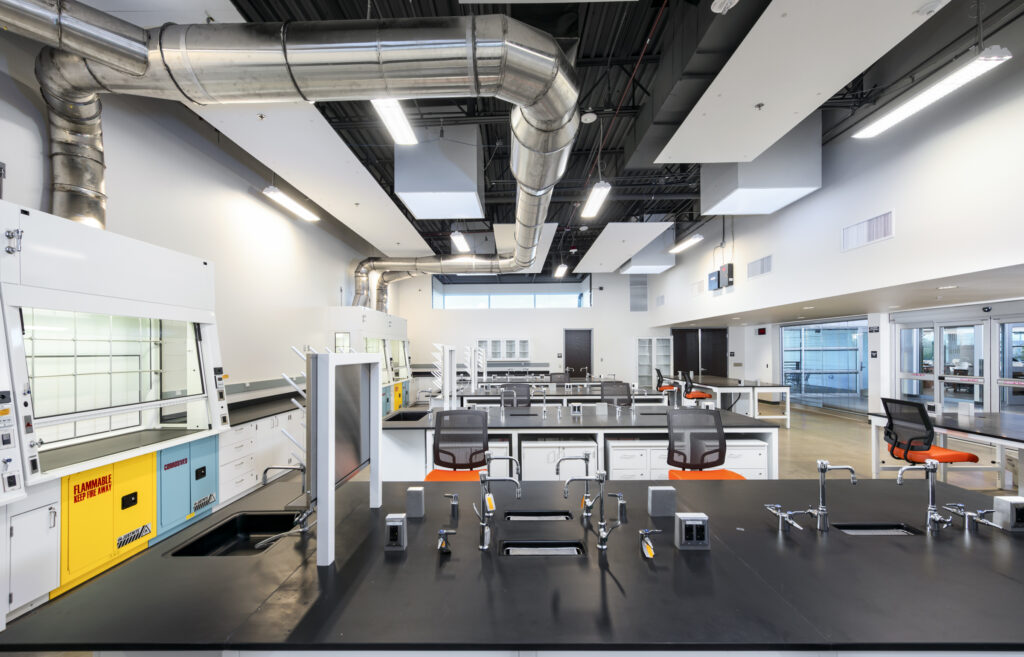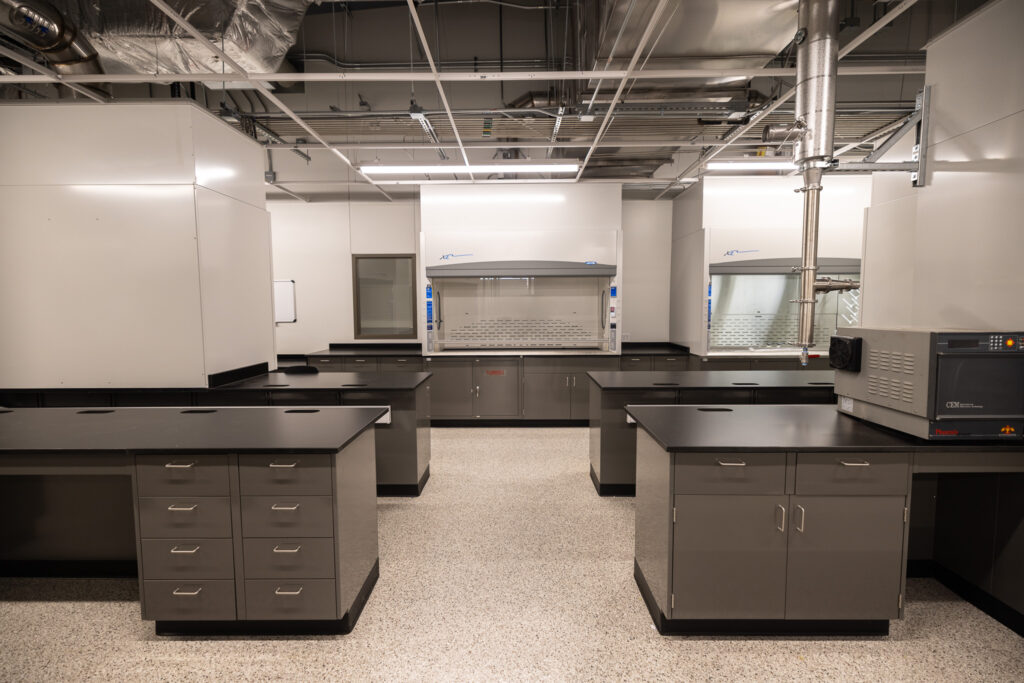Blogs & News
- Category: Laboratory
- DATE: March 1, 2023
Old Vs. New Fume Hoods: What are the differences and when is it time to upgrade?
Fume hoods have become an indispensable component of laboratory safety, providing a controlled environment for hazardous experiments, and protecting researchers from exposure to toxic fumes. As technology has advanced, so have the design and construction of fume hoods. Newer generations of fume hoods offer several improvements over older models, ranging from improved safety features and energy efficiency to better performance and cost savings. In this blog, we will discuss the differences between old and new fume hoods and explore the advantages of the latest technologies.

Old Fume Hoods
The design and construction of fume hoods have evolved significantly over the years, with newer generations offering several improvements over the older ones. Older fume hoods were typically lined with asbestos panels as an industry standard for chemical resistance, but the use of asbestos was discontinued after 1988 due to safety concerns. In addition, many older designs had raised airfoils that could cause spills, used non-military grade cables for vertical sash operations that became frayed and imbalanced over time, and provided limited visibility and light due to their small sightline. They also lacked a secondary spill trough or cable pass-through, which is now a standard feature for spill containment.
Older hoods were “constant volume” or “auxiliary air” type, which meant they always exhausted the maximum amount of air, even when closed or not in use. In contrast, newer hoods use VAV systems or low flow technology, resulting in high operating cost savings. The newer hoods also have lower static pressure, allowing them to operate more efficiently and with less noise. They also have a sill and can meet ASHRE 110 standards.
While older equipment was painted with baked-on epoxy paint that provided no UV protection and became discolored over time, newer hoods are powder-coated, eliminating discoloration, and can be branded with laser-cut logos. In addition, newer hoods are equipped with LED lighting instead of fluorescent lighting.
NEW Fume Hoods
Today’s hoods are designed to take advantage of low-flow technologies, resulting in 10 times less operating cost than older models. Furthermore, new fume hoods have been designed with special-purpose requirements in mind, such as teaching, visibility, pass-thru/demonstration, radioisotopes, perchloric acid, and ADA. They can also be fitted with “Autosash Passive Positioning Systems” or “Autosash Active Positioning Systems” for greater energy savings when the fume hoods are not in use.
Finally, new ductless technologies have been developed, which can be easily relocated to different spaces for shared services. Older hoods may not meet today’s requirements, such as UL1805, which verifies conformance to electrical, mechanical, and airflow characteristics. In summary, the differences between old and new fume hoods are significant, with new hoods offering improved safety, cost savings, and energy efficiency, as well as special-purpose designs to meet specific requirements.
It is important to upgrade to a newer generation of fume hood when your current equipment no longer meets the latest safety and performance standards. This can be due to various factors, such as the use of outdated technologies, damage, or wear and tear over time. Upgrading to a newer fume hood can not only improve the safety and efficiency of your laboratory but also help you save on operating costs and achieve better research outcomes.
How H2I group can Help
At H2I Group, our experts can help you assess your current fume hoods and determine the best course of action for upgrading to newer, advanced models that meet your specific laboratory needs. We offer a wide range of fume hoods, from general-purpose to special-purpose designs, as well as custom configurations to meet your unique requirements. With our expertise and experience, you can be assured of the highest level of safety and performance in your laboratory.
In summary, the differences between old and new fume hoods are vast, with new hoods offering significant improvements in safety, energy efficiency, and performance. As laboratory safety regulations become increasingly stringent, it is essential to keep up with the latest technologies and ensure that your laboratory equipment meets the highest safety standards. By investing in new, advanced fume hoods, you can not only enhance safety in your laboratory but also save on operating costs and improve research outcomes. Ultimately, the benefits of upgrading to a newer generation of fume hood far outweigh the costs, making it a worthwhile investment for any laboratory.
Learn more about fume hoods and our laboratory solutions or contact one of our experts today.
recent blogs



GET STARTED
LET’S TALK ABOUT YOUR PROJECT TODAY
Are you in need of expert guidance for your building project? H2I Group’s experienced professionals are here to assist you with any questions or concerns you may have. Contact us today to learn more about our services and how we can help you achieve your goals.


